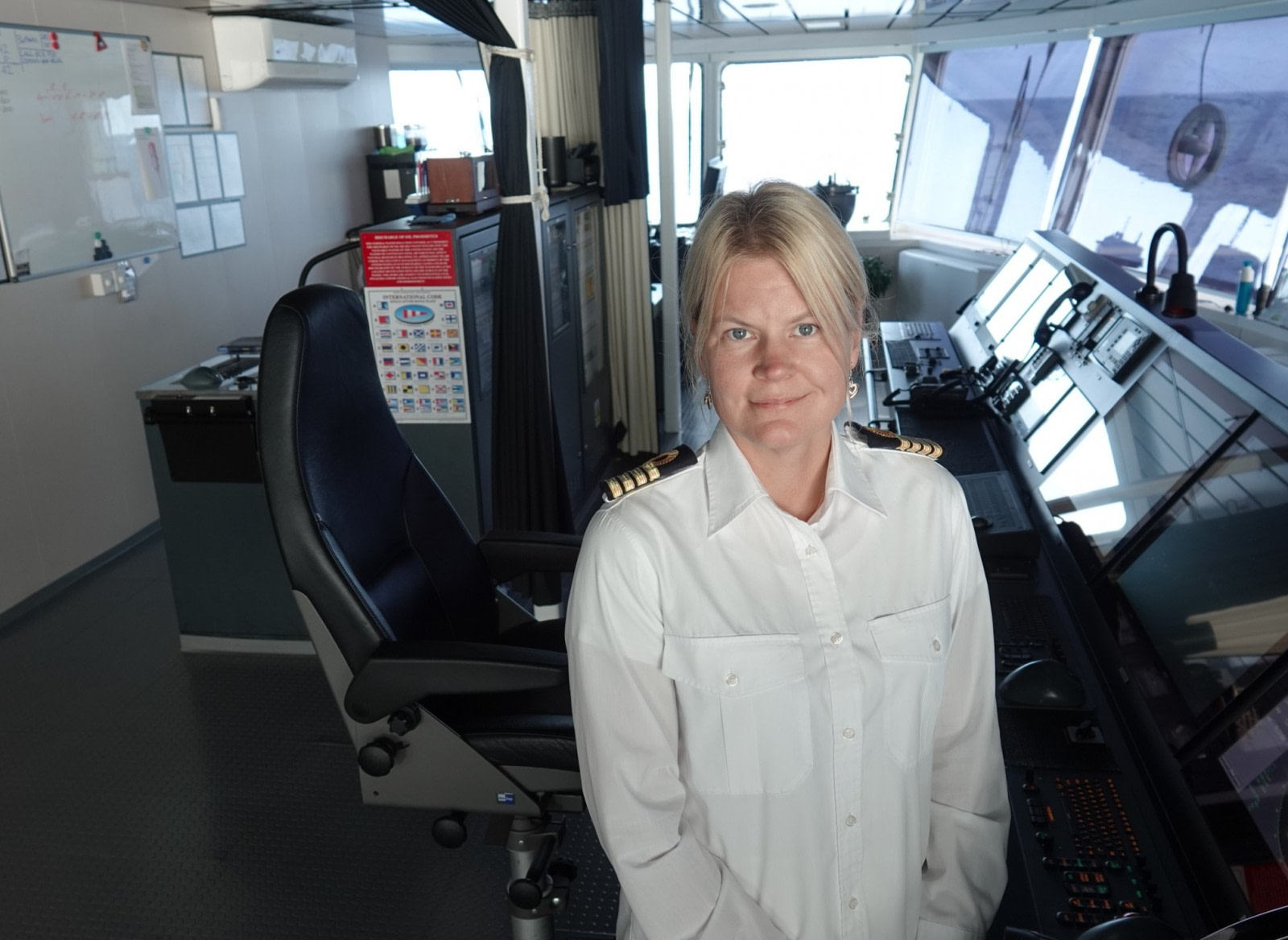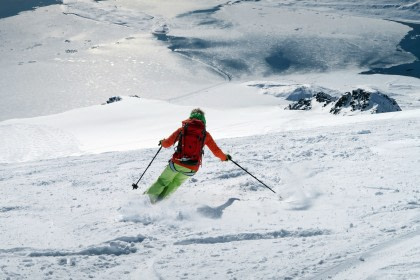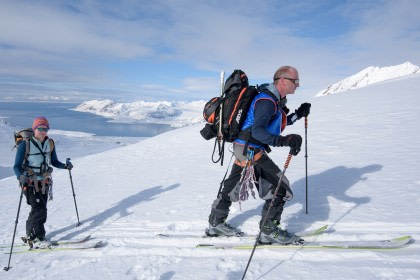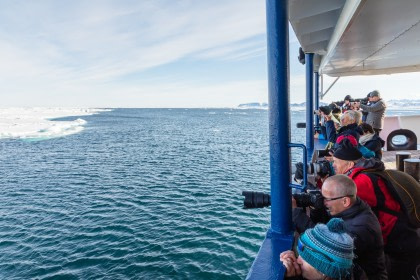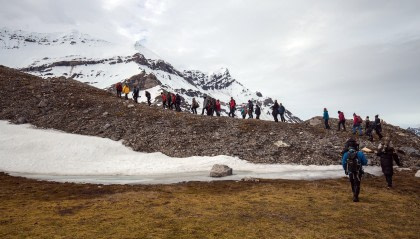Captain Holma talks about life at sea, being a woman in a traditionally male industry, and her unquenchable love of penguins
Miia Holma captained her first Oceanwide voyage to Svalbard in July. Nothing too exceptional about that until you consider she’s our first female captain to make the voyage.
In fact, she is our first female captain ever.
It’s still somewhat rare to encounter women in the seafaring industry, so to some degree our lack of female captains can be explained by a shortage of hiring options. Some estimates even claim women make up only around two percent of the world’s nearly two million seafarers.
While Captain Holma accepts this as a simple but changing fact of the industry, she has been involved in the nautical life long enough to feel the difference between the way she is perceived versus her male colleagues. We spoke to her about this, what got her started in the maritime profession, and what she loves most about sailing the polar seas.
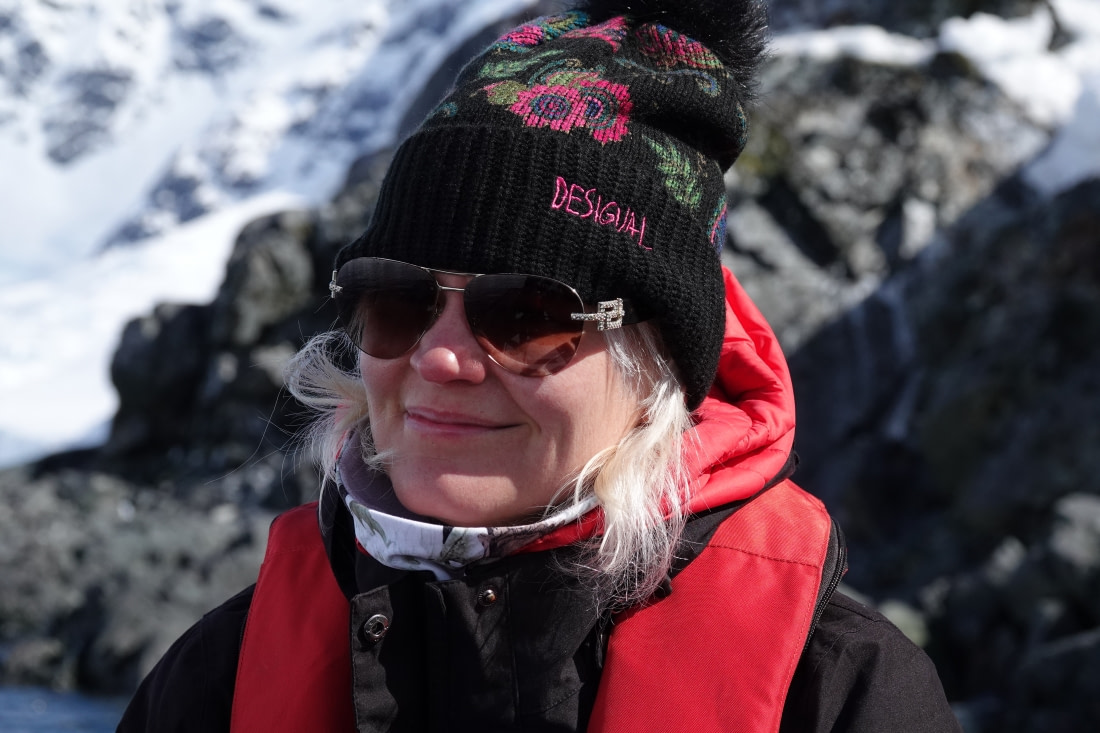
Picture by Miia Holma
Was it always the goal to be a captain in the Arctic and Antarctica?
It was always the goal to be a captain, but captaining a vessel in the polar regions was kind of accidental. I had been working for the same company in the shipping industry for about fifteen years, captaining a chemical tanker for the last five. I felt like I needed a change.
When I first applied to Oceanwide, it was not as a captain. I didn’t think I had enough experience for that in the polar regions, and most of my experience was with non-civilian passengers on cargo vessels. So I applied as chief officer first.
One of my first questions was whether there was a possibility for promotion in the future. Oceanwide seemed very positive about having a female captain.
So I started in October 2018, and by the following summer I was offered the chance to be captain on Plancius. I still thought it was too early for me, though. I could have done it, but I wanted to be able to do it properly and be able to provide the best for the passengers.
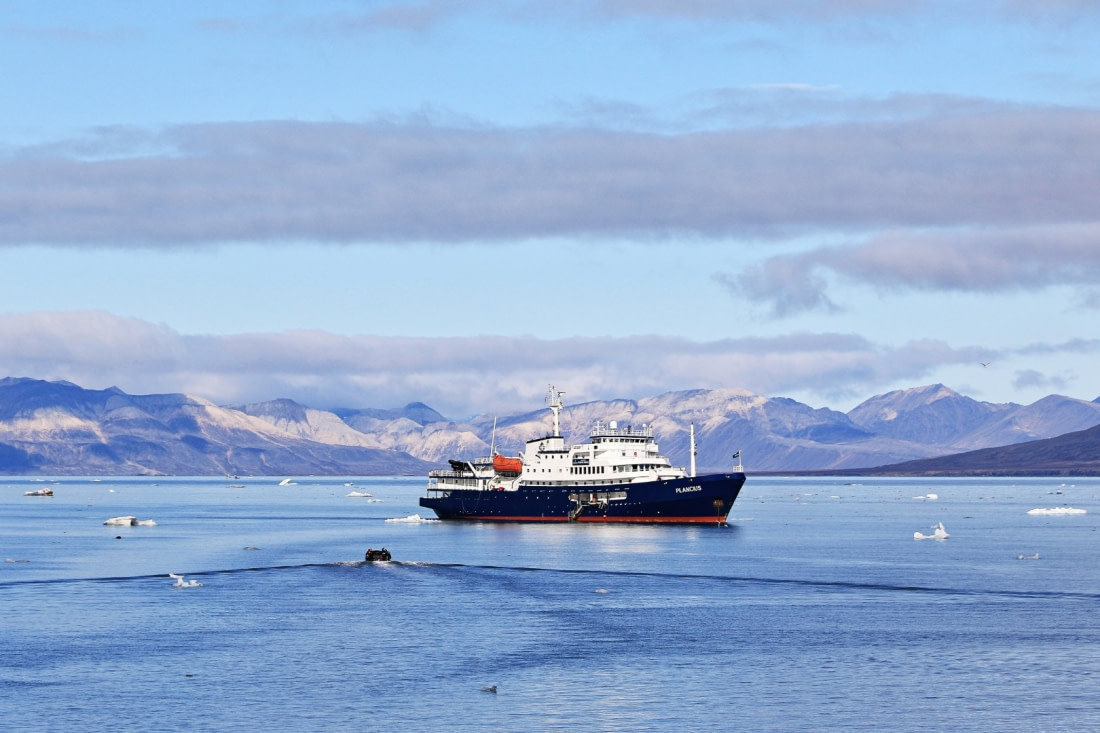
Picture by Armin Ruf
But we kept pestering you until you were won over?
Yes, I eventually agreed to be the captain in July for one voyage where they urgently needed a replacement. This was my first time as captain on a polar cruise. I will be staff captain again on Hondius this September, and later I will probably be captain during our Atlantic crossing. I will continue to be available as a staff captain or captain as circumstances demand.
What got you started in life at sea?
My family had a boat at the local harbor in Finland, and my dad used to take me to see the big cargo ships. There was no ISPS or security in those days. Once when I was five years old, I pointed at some old rusted carrier and told him, “I’m going to be captain of that one.”
You ended up being captain of slightly better ships.
Well, some of the chemical tankers I sailed on were not much better or newer. But I always had a great crew, which is the most important thing.
How does training to become a captain work in Finland?
After completing high school, you can apply to nautical polytechnic schools. But when you graduate from those, you’re still not ready to sail as a captain. You need to make your way up from the bottom, starting as a cadet and deck hand.
It’s a long way up and not easy, but I was very focused on my goal. I wanted to go to a Swedish-speaking polytechnic school in Finland, so for one year I studied Swedish, adding to my background from previous schools. I knew this would be helpful in finding a job, since a lot of Finnish shipping companies are from the Swedish-speaking part of the country.
I was eager to finish school, so I probably studied too hard back then. It usually takes a minimum of four and a half years to finish nautical school, but I finished in no more than three. In the meantime, I served as a cadet in a few Finnish companies during my holidays. I finally ended up in the chemical tanker company I worked in, where I rose from cadet to captain.
By being in the right place at the right time, I was always promoted pretty quickly. I was very grateful for that. In nautical school, you get the minimum two months of sailing experience you need to become a watchman or deck hand. But for the most part, it’s up to you to get the necessary sailing time to be certified for different positions up the chain of command.
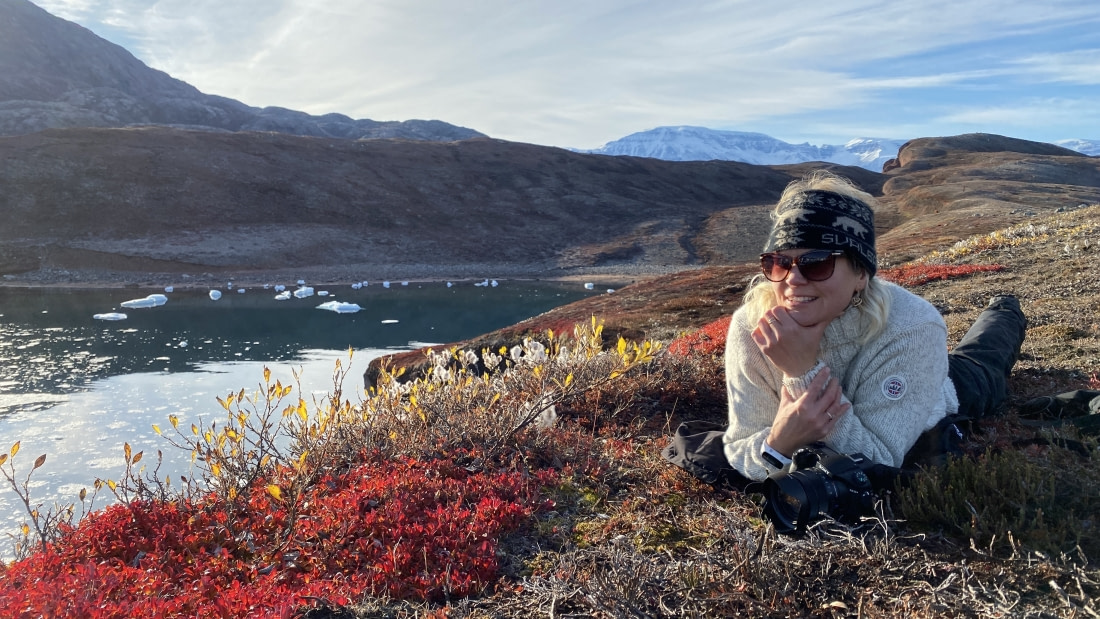
Picture by Miia Holma
Did you want to sail in the polar regions from the beginning, or was that something you discovered along the way?
I have always loved penguins, but my main goal was to become a captain. And even though I might have looked into polar voyages if I had known about them in school, I don’t think Arctic and Antarctic cruises were as popular back then as they are now.
But when I had done fifteen years of work in cargo ships, I felt like I needed a break. I called my company and told them I was taking a longer summer holiday.
That “holiday” became longer as I was thinking about what I wanted to do. It was close to a burnout, but not quite. I wanted to make a change before it got to that point. I was always working extra time for more than half the year, and it was an extremely stressful job with very little rest.
One morning I woke up and had the idea to make a CV with a PowerPoint presentation that included the whole story of why I wanted to become a captain in the first place, along with pictures from my life at sea. I started sending it everywhere I could imagine.
At the same time, I applied to a commercial airplane pilot school and got in. I already had the date set for when I was going to start, and everything was arranged. But then I got an email from Oceanwide, one of the companies I applied to. They invited me for an interview.
I got a good feeling about this, and I usually follow my feelings – with common sense, of course. So I put the airline school on hold and went to the interview. When I stepped into the office in Vlissingen, I saw all the pictures of penguins and polar bears and got so excited.
That was the first moment I realized I might be going to the polar regions. In their interview invitation, Oceanwide said I was a perfect candidate for them. But at the time, I thought they wanted me to captain tankers, not expedition vessels.
During the interview, I tried to play it cool. But when I left the office, I was almost jumping up and down. I called my dad immediately and told him the amazing news.
Amazing that we were able to lure you away from flight school!
I didn’t have to think twice. I started with Oceanwide for the Atlantic crossing, which was my first time on a passenger ship. Then we did the Antarctic season. Every time I go back to Antarctica, it’s a dream come true. No specific area, just all of it. The penguins, the glaciers, everything.
Another of my favorite places is South Georgia, where the penguin colonies and other wildlife are just unbelievable. And the Atlantic Odyssey we did this year, visiting all remote islands – St. Helena, Tristan da Cunha, Gough Island, Ascension Island. That was another dream come true.
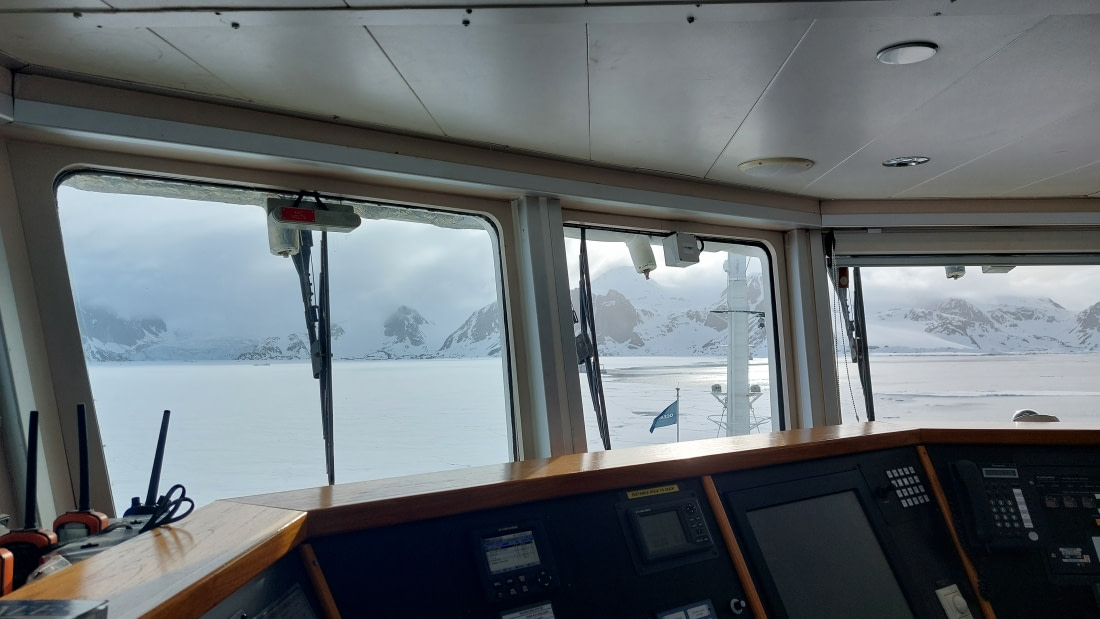
Picture by unknown photographer
How does captaining a vessel full of polar travelers compare to chemical tankers?
There are some tricky situations in both, but now the surprises come mostly from having the occasional challenging passenger on board. But I love interacting with our guests.
I was nervous at first, because I didn’t know how they would react to having a female captain. Would they be scared, would they be excited? There is always a reaction of some kind. It was the same with cargo ships. If we had a pilot on board when I did a maneuver, they were either excited or uncertain. It was never neutral. But most of the time it was a good reaction.
I’m not sure if this is changing. The difficult thing is that by the time you become a captain, you’re usually around the age most women need to start having a family if they’re going to do it. Balancing both might be possible, but it would be very difficult. I don’t think it will ever be 50/50 in the industry. It will remain male dominant. We just have to accept it.
Have you had a favorite moment or wildlife encounter?
Yes, in Antarctica. I was on a Zodiac with Dima, one of our famous deck crewmen who’s possibly been with Oceanwide the longest. I was a chief officer on this voyage.
While our guests were on shore, the captain told us to check out a channel we had been unable to pass on a previous trip due to ice. So we went out in the Zodiac, but along the way we ran into a pod of humpback whales. It was just incredible. They were all around us.
Dima had seen things like that a hundred times, but I was speechless. I made him stay out there with me until the last whale disappeared. And each encounter with a penguin is my favorite moment. Generally, wildlife is the thing that always makes me smile.
I don’t think I will ever get bored of that.
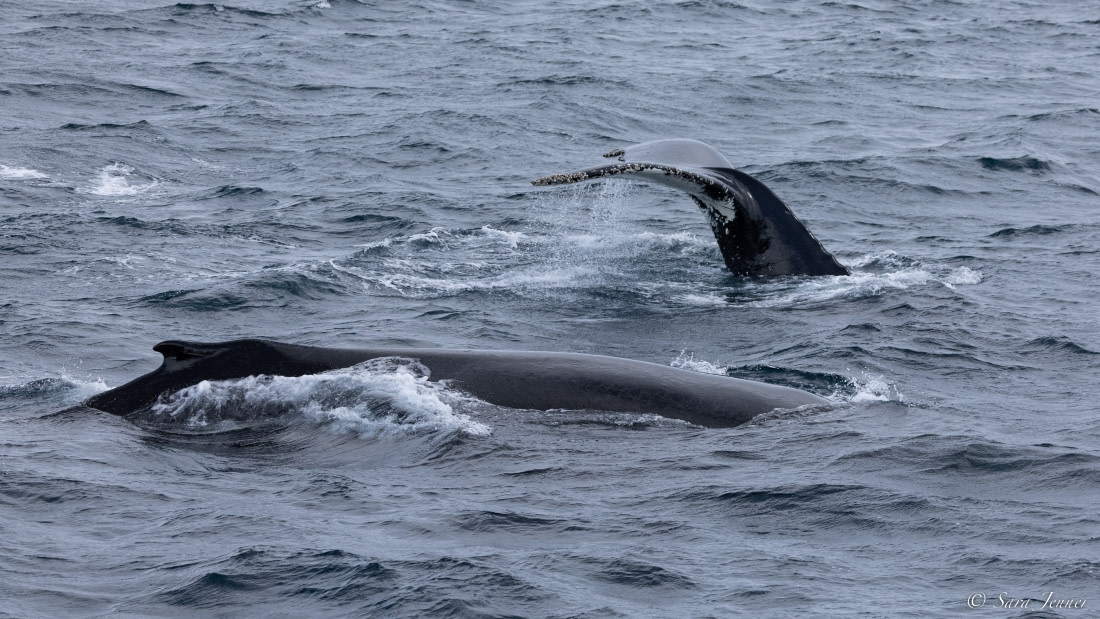
Picture by Sara Jenner
Main image by Miia Holma
